If we are to create more walkable cities then we should also be creating more urban green infrastructure. The below article highlights research and case studies that emphasises how walkability is enhanced by the levels of urban green infrastructure and how it is an essential element of healthy cities, streets and places.
People walk more in Green Cities
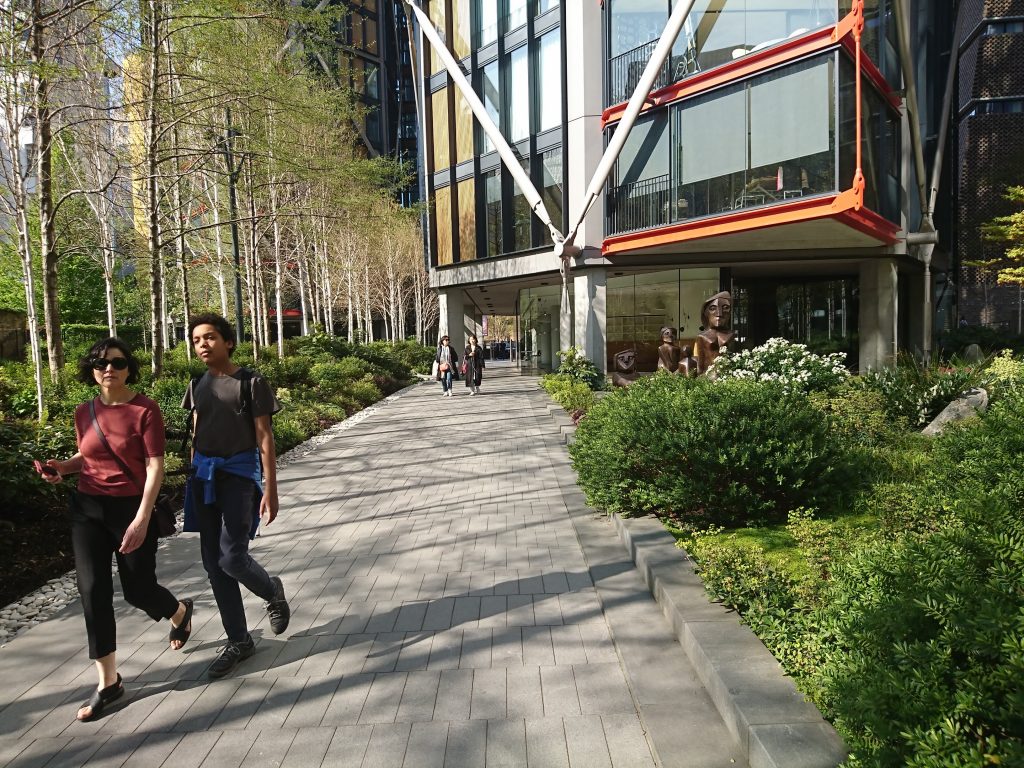
Studies in Australia have shown that where people perceive their neighbourhood to have lots of green space, they are more likely to walk and be more physically active.
However, the trend goes further than mere perception, greenery is also a big indicator of how much communities walk. Research shows that access to nature is key to ensuring both the physical and mental health and wellbeing of us as individuals and our communities. Nowhere is this more apparent than in cities and urban areas, where European research has shown that people living in nature deprived areas are more likely to be obese and less active. Whilst in the US, research evidenced that tree lined streets encourage people to walk more than those without.
Trees enabling walking in hot climates
One of the most basic benefits that trees bring is shade and lowering temperatures for their surrounding environment. That is why the shade and cooling benefits that trees bring are an important element of a good walking environment anywhere, but in-particular in hot climates. In countries where walking is not seen as desirable because of the sun and heat, tree lined walkways are essential for encouraging people to walk. In Australia, the organisation Shade-ways, maps and promotes walking routes with lower temperatures associated with green shade.
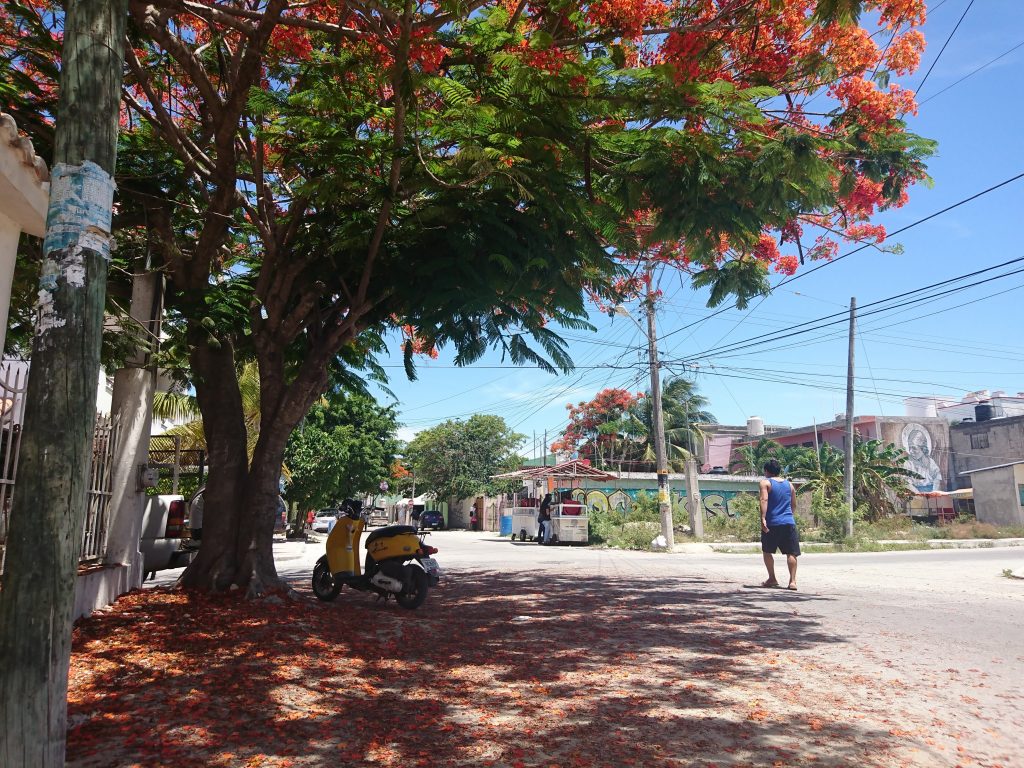
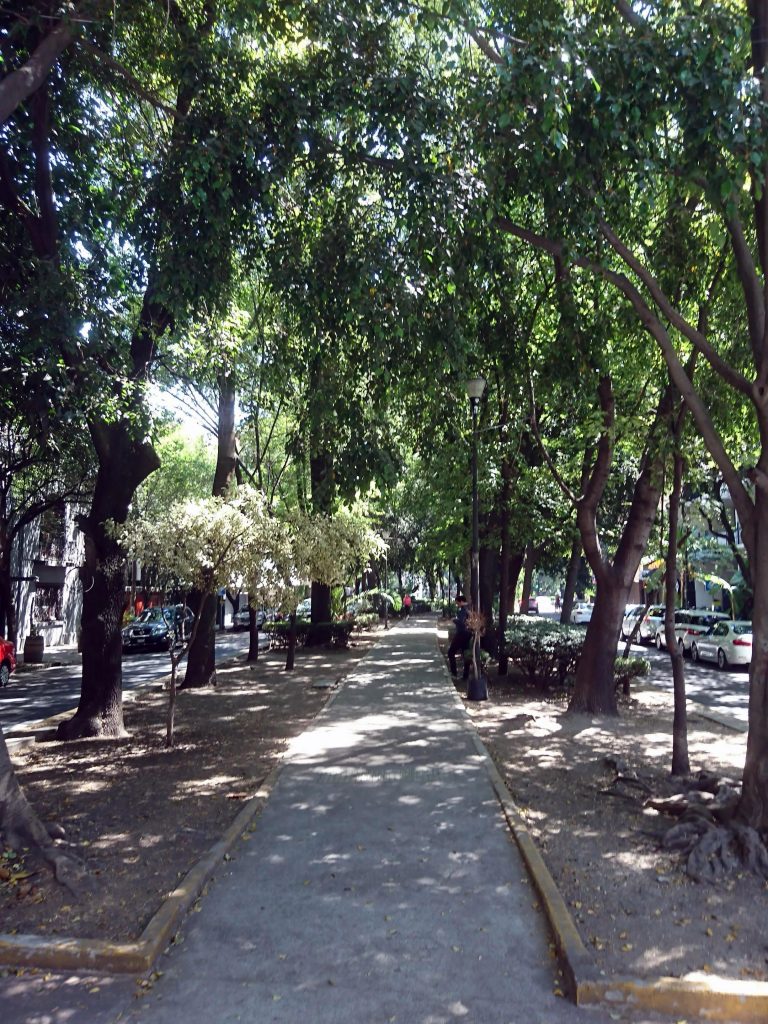
In addition the shade of trees has been evidenced to provide protection to pavements from pavement fatigue and cracking; therefore improving the walking conditions and maintaining footway for longer.
Greenery encourages active children
Child friendly cities also need to focus on green infrastructure, with children reporting that parks, trees and natural areas are more favourable urban areas, than more formal play areas; and they are more likely to walk there.
Research has shown that if there is a park within half a mile of a child’s home they are more than twice as likely to walk; whereas if the green spaces are further away children rely on their parents to drive them there. So higher density and proximity of green spaces is also essential to getting children and adults walking.
Reducing motor vehicle dominance and increasing pedestrian safety with Greenery
In addition to encouraging walking through improving the aesthetic and physical walking environment, street trees and road side planting can also improve road safety and create more people focused places.
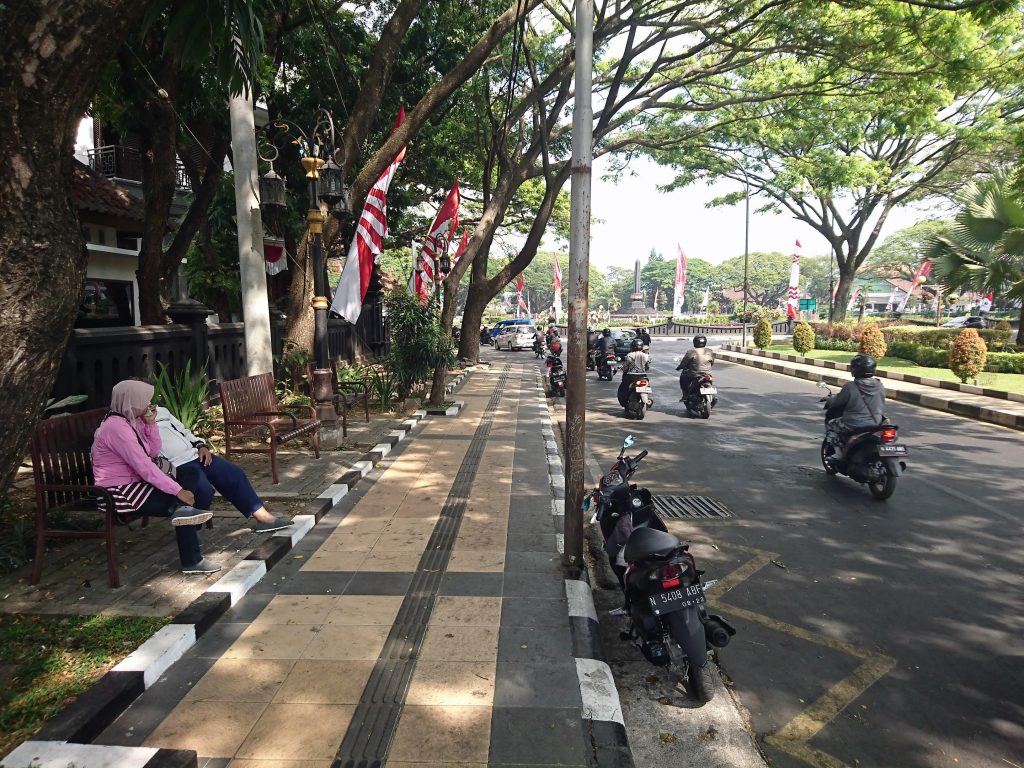
Research in Texas has shown that tree lined streets help to slow vehicles by up to 8 mph and have been recorded as leading to 46% less car crashes, as the complexity of the environment encourages drivers to focus and slow down. This is starkly different when compared to the impact that a lack of greenery, and the existence of concrete or unnatural materials has on increasing vehicle speeds through the canyon effect.
Trees and natural infrastructure lining streets and roads have also been reported to decrease driver stress levels and frustration.
Whilst drivers view tree lined streets with large amounts of greenery to have favourable communities, and that they prefer this to signage and commercial land use on streets. This all shows that greenery on streets makes driving conditions safer for pedestrians and walking.
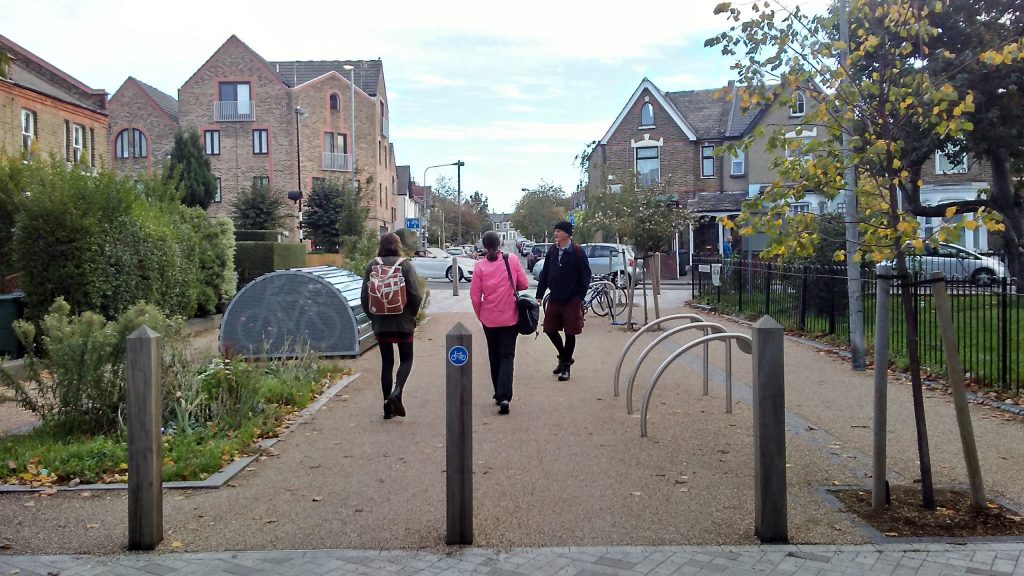
Modal filters that include greenery such as trees, planting and raised beds accompanied by other people focused street infrastructure – such as seating and bike racks on streets also reduces car dominance by acting as filters to reduce driving levels.
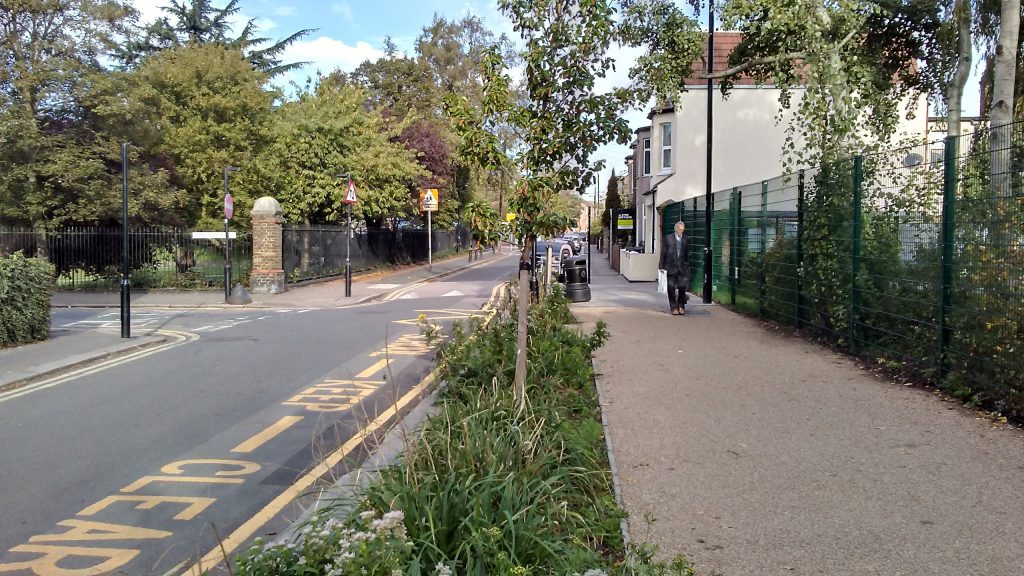
Parklets and SUDS (Sustainable Urban Drainage) act as both pockets of urban greenery at the same time as replacing parking spaces; increasing the space available to pedestrians and also providing other people focused amenities such as seating.
Tactical urbanism interventions such as replacing carriageway with greenery around footway build outs and crossings can enhance walking routes at the same time as decreasing the width of pedestrian crossings; whilst also reducing the width of streets which calms traffic. Improving pedestrian priority and generally changing the nature of streets to become more people and community focused.
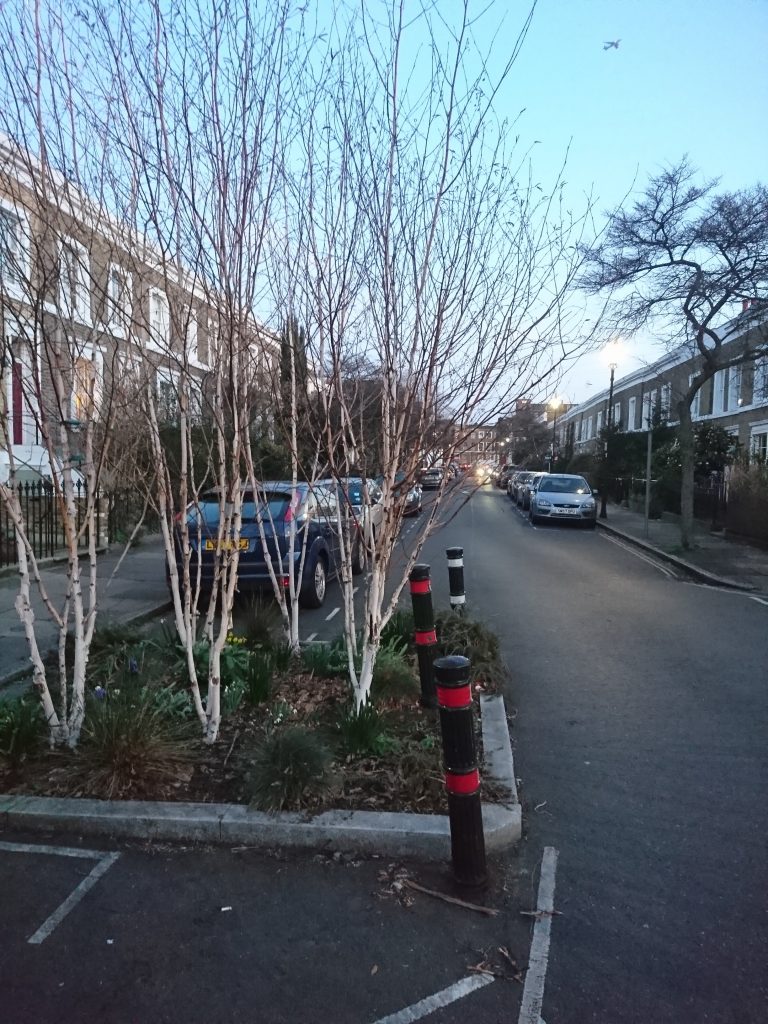
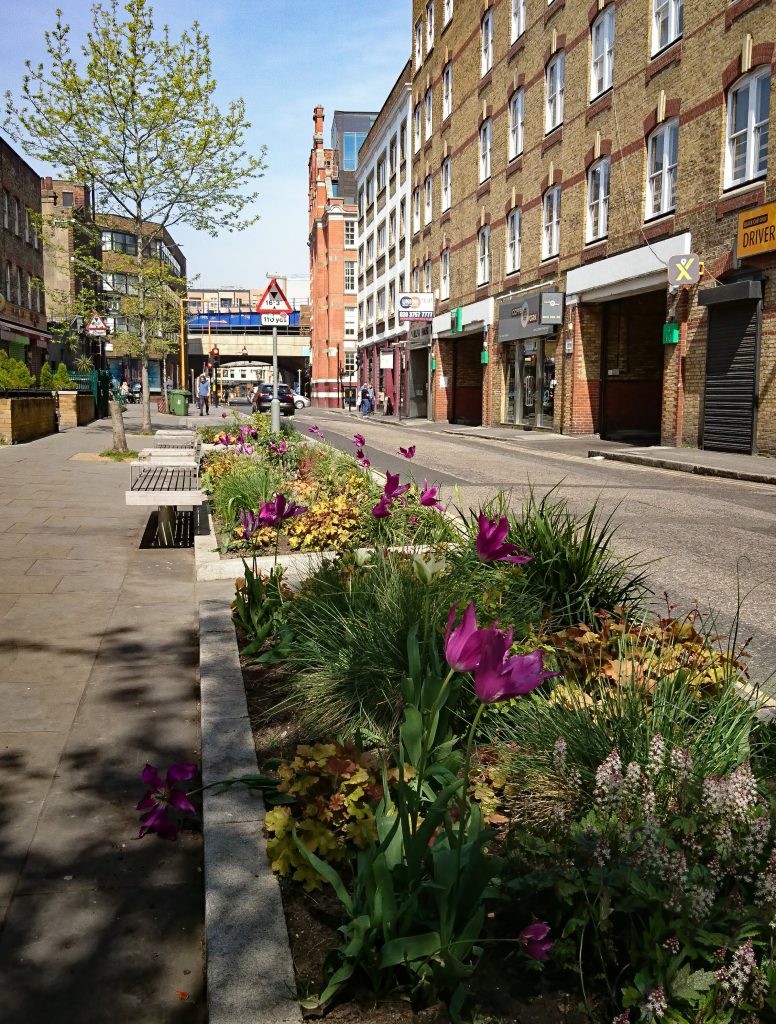
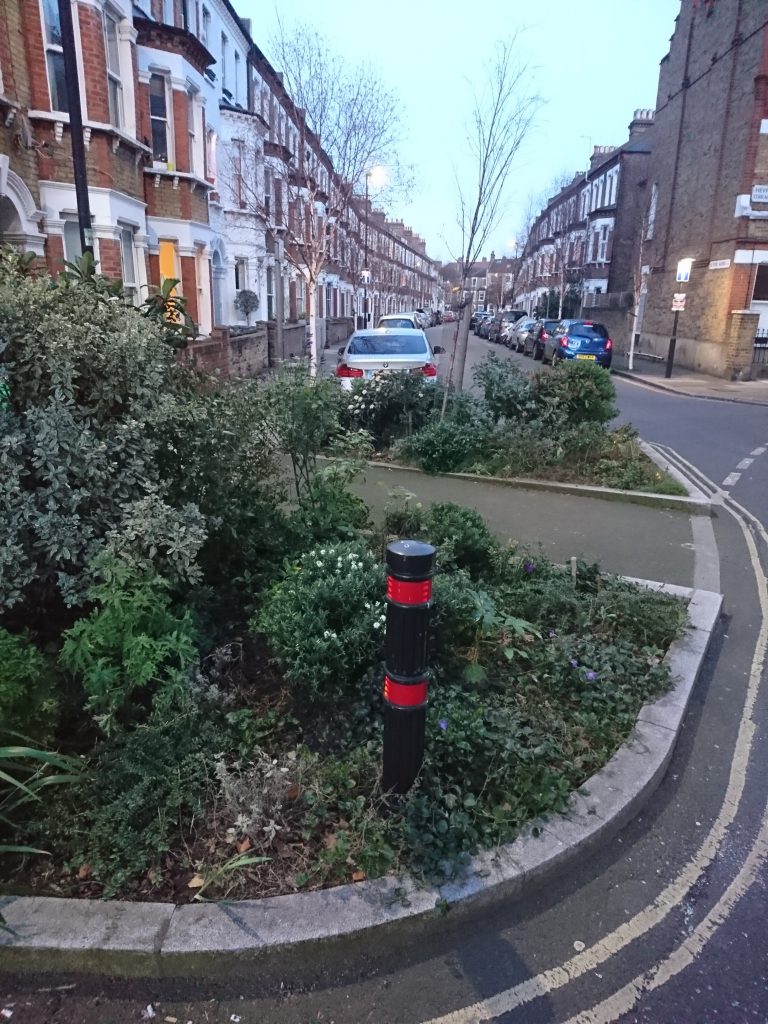
In summary – Urban green infrastructure is an essential element and tool in creating walkable streets and places in cities and towns. Urban greenery impacts all elements of how walkable they cities are, from attractiveness, safety, quality of the environment, down to how comfortable a street is to walk on. Green cities are walkable cities!
Published September 2019

